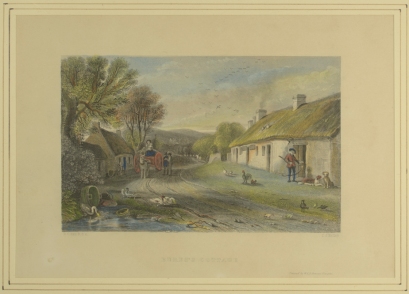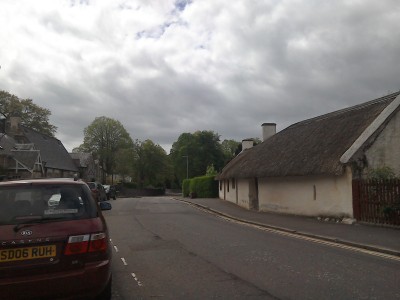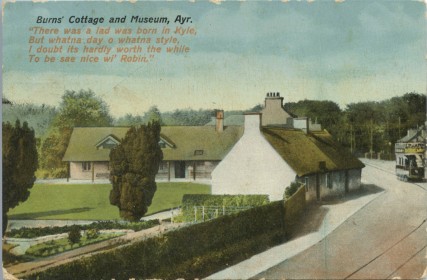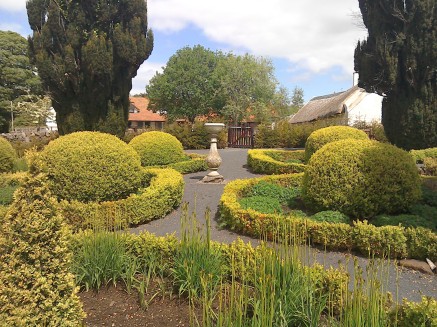Then & Now: Burns Cottage
Although we aim to keep Burns Cottage looking the way it did when Robert Burns lived there, the Cottage has a long history of different owners, adjustments, and building works. Today we shall explore how Burns Cottage and its surrounding area has changed over the years.

This image is one of the earliest of the Cottage. Dated 1805, it featured in a Scots Magazine article about the birthplace of Robert Burns and mentions that the house had become a pub and a place of Burns Night celebrations. In this picture the Cottage seems almost isolated, being nestled amongst a wilderness of over grown trees. Although there seems to be an absence of other houses, the Cottage was still by a main road, hence why a traveller is featured.


In 1829 the scene looks very similar. The road is still rough, with the trees still visible at the back of the cottage. However, we can now see that the Cottage is larger, as an extension for the pub has been added on. During this time, animals were still housed in the byre, so some farm activity still happened at the cottage. From both images it is clear that Alloway is still not very built up, with only the odd one or two farm cots in the vicinity. Whether those cottages were present in 1805, we sadly cannot confirm. Also notice how, what is now a pavement, was a grass verge, that sloped down into the muddy road.

This engraving is a copy after this painting by Samuel Bough RSA, which was created as a study for this piece now in the Kelvingrove Museum and Art Gallery. This shows Alloway in the depths of an extreme winter. At the time the Cottage was inhabited by Crimean veteran Thomas Morley and his family. Some artistic licence may have been taken here in order to create the rustic vision of Burns’s beginnings as Alloway, by this time, might have been slightly more developed than what is portrayed. Additionally, in the 1870s, no animals were housed in the cottage as the byre had been turned into a bedroom. Thus it is also questionable how much farming took place on site at that time.


This depiction of the cottage dates from around 1890, by which point the Cottage was owned by the Monument Trustees, and was run as a heritage site. Still existent is the pub extension and hall that were added in the early and mid 1800s. However, these extensions came down in the 1900s, when the current Education Pavilion was built. The rustic environment seems to have disappeared with some form of smoothed road outside the house, while the accompanying lands of Burns Cottage have been fenced in and tamed. The view appears to be taken from the place where Alloway’s town hall is now.


These picture shows the cottage in the 20th century. North of the cottage is current Education Pavilion, which then served as a museum. The extensions built during its time as a pub have been demolished and the cottage looks more like it would have during the residence of William Burnes and his family. A section of farmland by the cottage has been turned into lawn space and gardens. Although the landscaping has changed, the visage looks familiar, and the Yew trees are now fully grown. On the street, houses, pavements and a tarmac road have appeared, as well as a tram, which was in service between 1901 and 1931.


It is amazing to see how places change over the years. Burns Cottage is interesting because, while there has been so much focus on keeping it and keeping it the same, there have been many changes. Extensions have gone up and have been knocked down, while houses were built up and taken down around it. The land has been tamed while roads, cars, and buses appeared. Now Alloway is not the almost wilderness it appears in 1805, but a thriving village.
June 11, 2015 at 2:49 pm
Thank you. Interesting to see the changes to the cottage and town over time.
June 12, 2015 at 9:17 pm
Thank you! we are hoping to do one on the inside in the future.